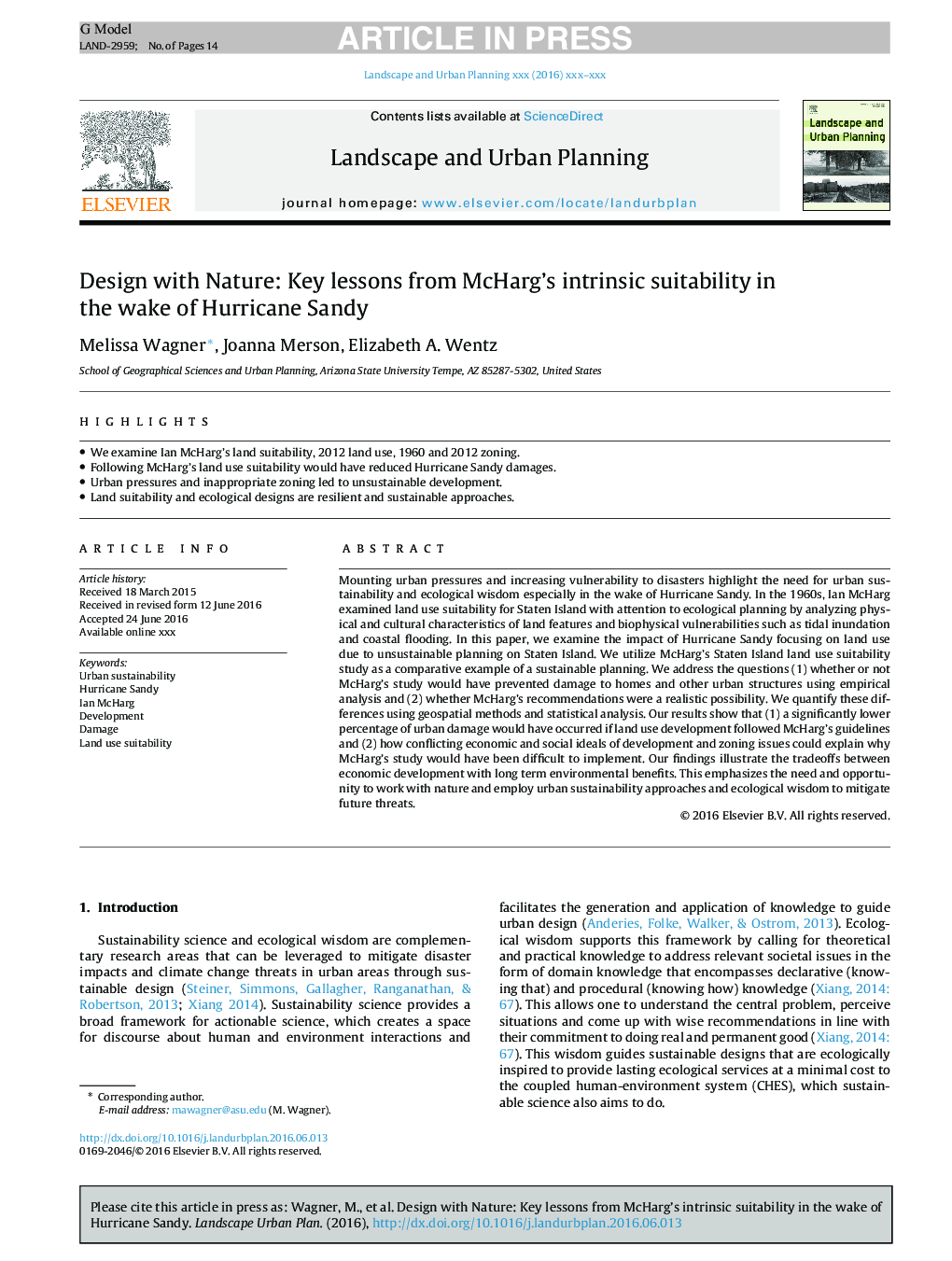| Article ID | Journal | Published Year | Pages | File Type |
|---|---|---|---|---|
| 5115132 | Landscape and Urban Planning | 2016 | 14 Pages |
Abstract
Mounting urban pressures and increasing vulnerability to disasters highlight the need for urban sustainability and ecological wisdom especially in the wake of Hurricane Sandy. In the 1960s, Ian McHarg examined land use suitability for Staten Island with attention to ecological planning by analyzing physical and cultural characteristics of land features and biophysical vulnerabilities such as tidal inundation and coastal flooding. In this paper, we examine the impact of Hurricane Sandy focusing on land use due to unsustainable planning on Staten Island. We utilize McHarg's Staten Island land use suitability study as a comparative example of a sustainable planning. We address the questions (1) whether or not McHarg's study would have prevented damage to homes and other urban structures using empirical analysis and (2) whether McHarg's recommendations were a realistic possibility. We quantify these differences using geospatial methods and statistical analysis. Our results show that (1) a significantly lower percentage of urban damage would have occurred if land use development followed McHarg's guidelines and (2) how conflicting economic and social ideals of development and zoning issues could explain why McHarg's study would have been difficult to implement. Our findings illustrate the tradeoffs between economic development with long term environmental benefits. This emphasizes the need and opportunity to work with nature and employ urban sustainability approaches and ecological wisdom to mitigate future threats.
Related Topics
Life Sciences
Agricultural and Biological Sciences
Ecology, Evolution, Behavior and Systematics
Authors
Melissa Wagner, Joanna Merson, Elizabeth A. Wentz,
